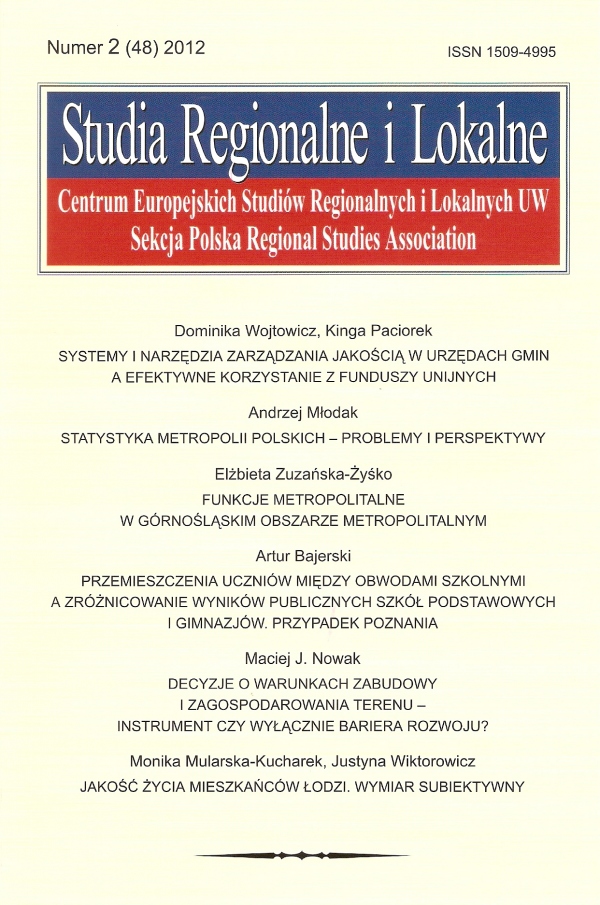Published in
2(48)/2012

- Dominika Wojtowicz, Kinga PaciorekQuality management systems and effective use of EU funds[more]
- Andrzej MłodakStatistics relating to polish metropolises – problems and perspectives[more]
- Elżbieta Zuzańska-ŻyśkoMetropolitan functions of the Upper-Silesian Metropolitan Area[more]
- Artur BajerskiPupil movement between school catchment areas and differences in examination results of primary and secondary schools. The case of Poznan[more]
- Maciej J. NowakDecisions on building conditions and land management – a useful instrument or a development barrier?[more]
- Monika Mularska-Kucharek, Justyna WiktorowiczThe quality of life of Lodz residents[more]
- Wojciech SońtaAnna Szelągowska, 2011, Finansowanie społecznego budownictwa mieszkaniowego, Warszawa: Wydawnictwo Fachowe CeDeWu, 414 s. (recenzja)[more]
- Eliza SuskaIzabella Bukraba-Rylska (red.), 2011, Między interwencją a interakcją. Lokalne grupy działania w społecznościach wiejskich, Warszawa: Wydawnictwo Naukowe Scholar, 133 s. (recenzja)[more]


